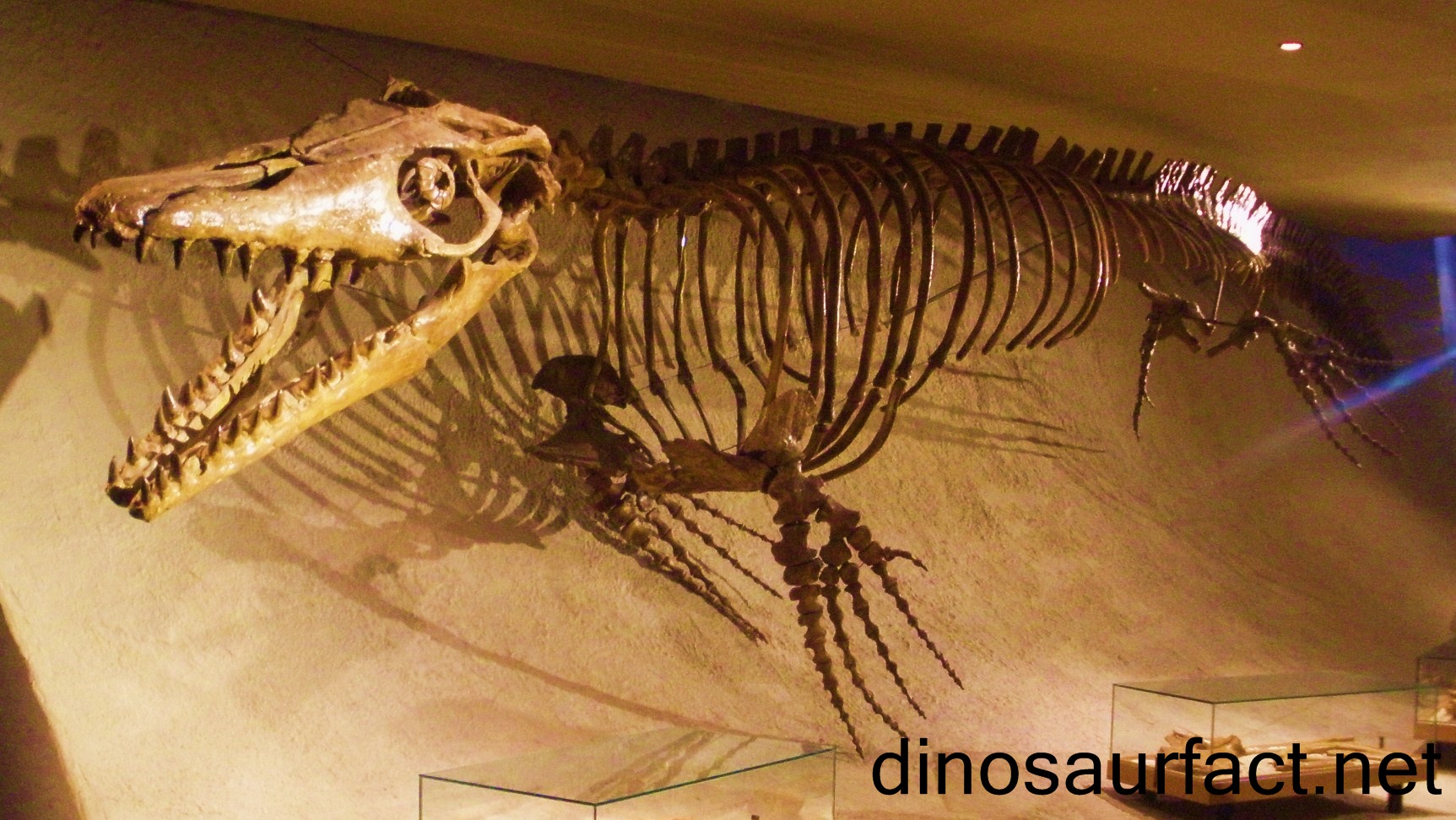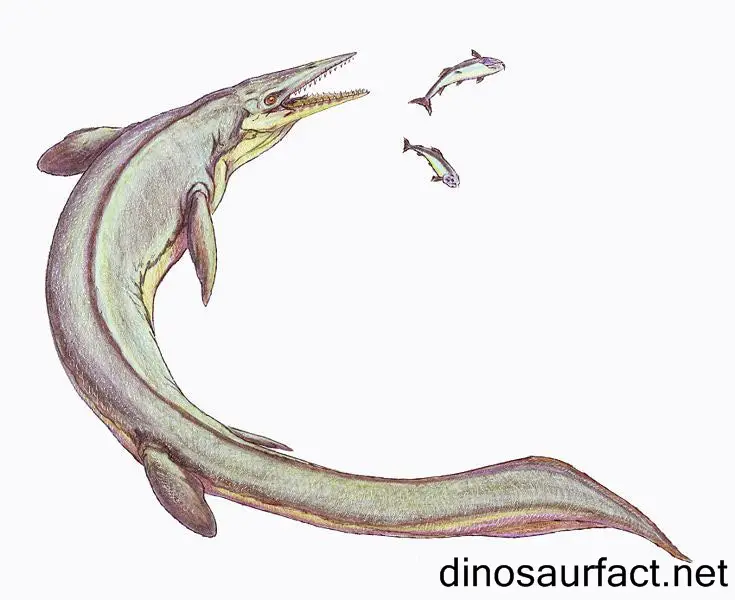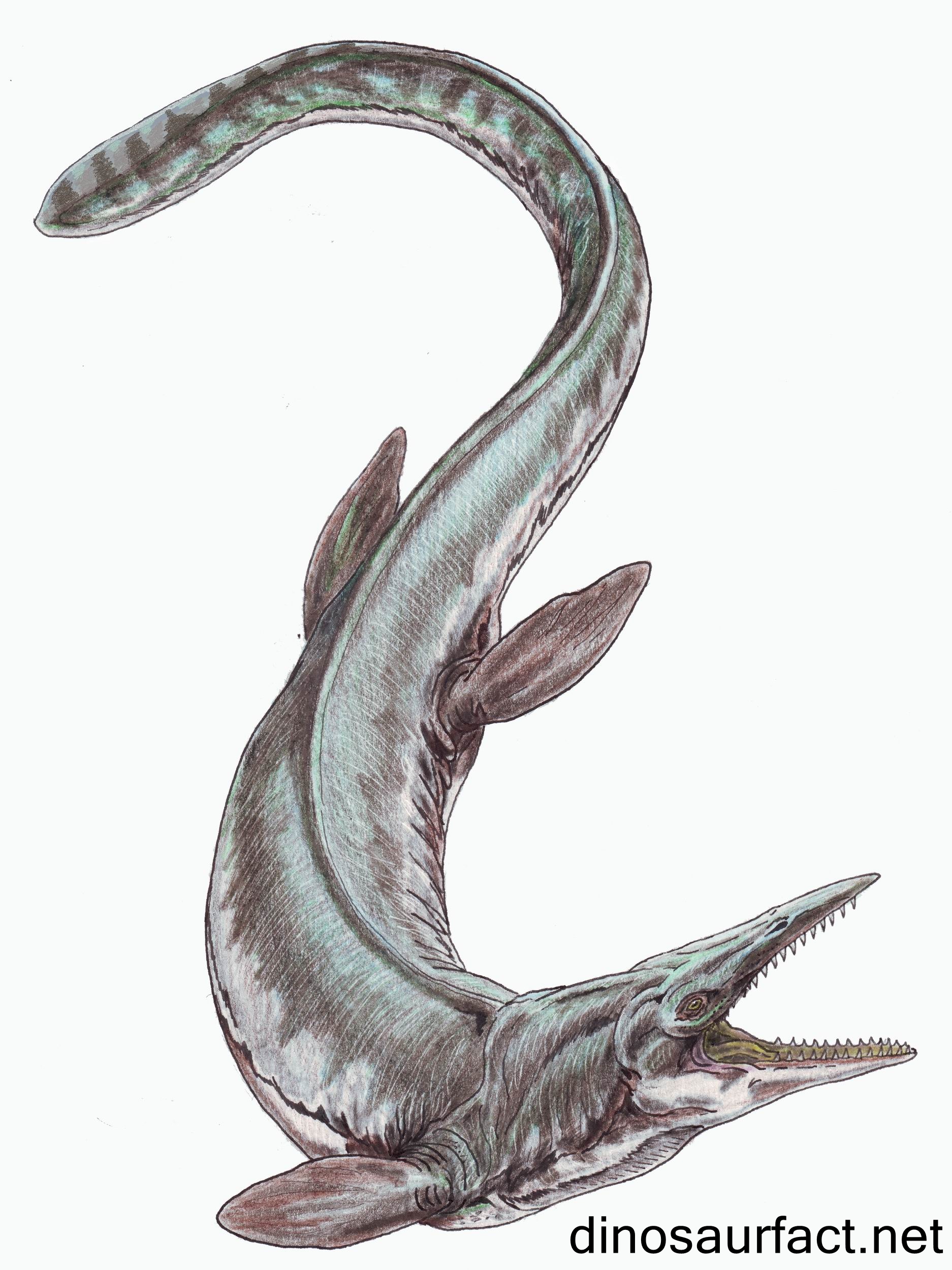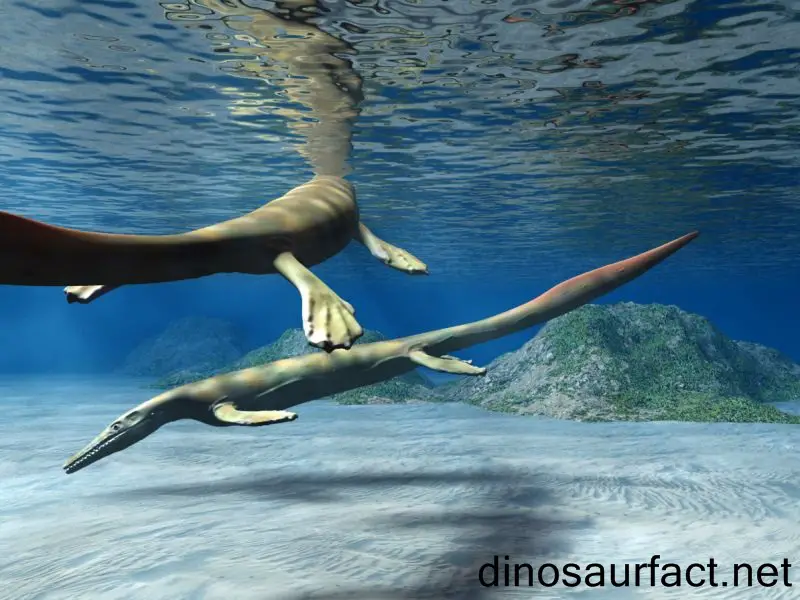



With the oceans today still shrouded in mystery, imagine what the scenario must’ve been millions of years ago. In the Jurassic age, when stupendously huge lizards crawled the surface of the earth, the waters were infested by an array of marine pre-historic inhabitants. Rivalling their land counterparts in ferocity and predatory skills, these marine dwellers used to lurk in the deepest nooks and corners of their watery habitat.
Scientific Classification
Kingdom: Animalia
Phylum: Chordata
Class: Sauropsida
Order: Squamata
Family: Mosasauridae
Genus: Eonatator
The Eonatator was one of the many pre-historic marine predators who roamed the earth in that era. With a dolphin like agility, the Eonatator was one of the earliest known Mosasaurs to roam the planet.
The build
Table of Contents
The Eonatator, was among the smaller known Mosasaurs. The length of the skeleton type unearthed, that represents an adult, is only 2.65 meters long. Like several Mosasaurs, it is believed to have fed totally on fish and smaller marine reptiles.
Inhabiting the oceans of North America, the Eonatator roamed the planet in the middle to the late Cretaceous period i.e. almost 90-75 million years ago.
The Eonatator – An overview
- Eonatator is Greek for “dawn swimmer” and is pronounced as “EE-oh-nah-tay-tore”.
- It’s defining characteristic was its small sized slender body.
- The exact taxonomy of the Eonatator continues to be a source of mystery to the scientists. Once thought to be a species of Clidastes, and then of the Halisaurus, Eonatator is currently believed to have been one amongst the earliest Mosasaurs, and comparatively tiny (10 feet long and a number of hundred pounds) to be the primogenitor of such a fearful race.
- Eonatator may’ve been a genus of halisaurine Mosasaurs from the higher Cretaceous of North America, South America and Europe. Originally, this biological group was enclosed inside Halisaurus, but was later onĀ placed in its own genus.
About the Eonatator
Eonatator comes from the Smoky Hill Chalk Member of the Niobrara Chalk Formation (Upper Coniacian – Lower Campanian) of Kansas, from the Eutaw Formation (Santonian) and Mooreville Chalk Formation (Selma Group; Santonian-Lower Campanian) of Alabama (United States), from the Kristianstad Basin of southern Kingdom of Sweden (late early Campanian).
The name Eonatator suggests that “dawn swimmer” (Greek Eos = dawn + Latin traveler = swimmer). Initially, it contained solely one species, E. sternbergii. The species was named in honor of Charles H. Sternberg and his son, Levi. Because it was they, who discovered the above mentioned specimen within the Niobrara Chalk in the summer of 1918. A second species, E. coellensis, was named after the city of Coello within the Department of Tolima, Colombia, in South America, since it was discovered close to that city.
Like several other Mosasaurs, this genus encompasses a difficult compartmentalization history. The discovered specimen (UPI R 163, Upsala University paleontological Institute, Uppsala, Sweden), a virtually complete skeleton, was originally cited the genus Clidastes by Wiman then later on, to Halisaurus by Russell. Hence, Clidastes sternbergii became Halisaurus sternbergii. However, by the late Nineteen Eighties, some paleontologists began to recommend that H. sternbergii belonged in its own genus and also, that Halisaurus was polyphyletic.
The description of the Eonatator in “Bardet et al. (2005, p. 465)” is as follows: “Ambiguous characters: premaxilla-maxilla lateral suture ending posterior to ninth jaw teeth; tail is about 40 percent of the head and the trunk length (convergent in mosasaurines); coccygeal vertebra length is bigger than its dimension; fewer than four pygal vertebrae exist; femoris length is about double the distal width (convergent in Clidastes).
Autapomorphies: membrane bone with sleek triangular table extending towards the rear end, bearing medium-sized circular gap, settled at a distance double its diameter from the frontal-parietal suture, and encircled anteriorly and posteriorly by 2 parallel ridges; rounded quadrate with frequently gibbose tissue layer ala wing.”
Bone formula
- 7 cervicals.
- 24 dorsals.
- Four pygals.
- Twenty eight median caudals.
- A minimum of forty one terminal caudals.
- Arm bone length some two.5x distal dimension.”
Eonatator coellensis is characterized by nostrils that are on the upper side of the cranium , between the seven and the seventeen tooth. Premaxilla and jaw with a brief rostrum anterior to the primary teeth.
It’s skull is marked by the presence of a septomaxilla, an outsized anterior, that forms a majority of the outer nostril, a brief and wide frontal, a membrane bone gap settled close to of the fronto-parietal suture, a triangular surface of the membrane bone with 2 medial depressions and twenty two caudal vertebrae.
A cladistic analysis of the Halisaurinae has indicated, that Eonatator is a close relative of the biological group Halisaurus and that it’s one of the most primarily known mosasaurid taxa.
The length of the collected specimen of E. coellensis, “IgM p 881237” (which lacked its tail), is of 2.8 meters till the last preserved caudal vertebrae, with a cranium of about forty one point five centimeters.
The specimen of this species is exceptional because it still contained the remains of sloppy tissue within the ear region, the neck, pectoral and even the abdominal region, a phenomena that’s unheard of in the history of fossil discovery.
Beneath the pygal vertebrae and the seventeenth vertebra, there’s a series of twenty little vertebrae centra and a flated bone, the combined measurement of which is twenty five centimeters.
It had the characteristics of the mosasauroids, with 3 vertebrae with vessel arches and procoelic centra, that recommend the likelihood the these little bones belonged to an embryo of this species, though the shortage of diagnostic fossils just like the cranium or teeth, makes this theory a little fickle.
The Eonatator, like many other marine dwellers even today, remains a mystery. As is the case with most pre-historic inhabitants, most of the present knowledge about these species, comes from their fossil remains. A predecessor to the present day sharks and other aquatic hunters, the Eonatator used to rule the water world with its marine counterparts.
As new fossil specimens are discovered every day, the scientists constantly strive towards unravelling as much mystery as they can about this creature still shrouded in mystery.
